Introduction
- Wal-Mart is the largest retailer in the world.
- It’s marketing approach include low priced products, just-in time delivery and organizational behavior.
- It operates in major countries such as China, Canada, Brazil, Japan, and United Kingdom.
- This paper will look at the internal as well as the external analysis of Wal-Mart.
- It will also look at its competitive advantage using porter’s five forces model, its marketing strategy, future strategy, and its organizational values.
Introduction Wal-Mart is the largest retailer in the world a position which it has earned through its marketing approach including low priced products, just-in time delivery and its organizational behavior. Organizational theory is the study of an entire organization, strategies used by the organization, and structures that mold the organizational future. Wal-Mart is a complex organization, vibrant and goal oriented and therefore there is need to understand its structures, and strategies that make it different from other organizations. Wal-Mart is among the largest retailers in United States which handles its operations through super centers, and discount stores. It operates in major countries such as China, Canada, Brazil, Japan, and United Kingdom. It has used its organizational theory to utilize its available resources thereby fostering production. One of the structures used by Wal-Mart is decentralized structure which is believed to improve performance. This paper will look at the internal as well as the external analysis of Wal-Mart, look at its competitive advantage using porter’s five forces model, its marketing strategy, future strategy, and its.
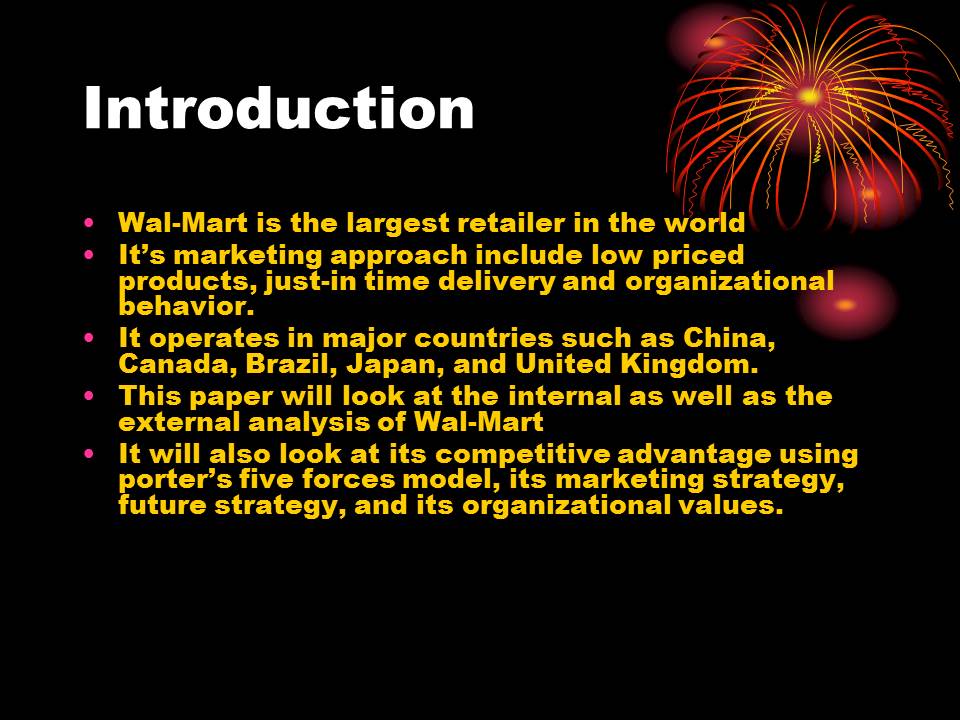
Wal-Mart’s SWOT Analysis Strengths
- A strong brand name.
- Strategic leadership and effective management.
- Strategic expansion through customer-focused innovations.
- High technological innovativeness.
- Strong value chain and business model- reliable and speedy fulfillment activities.
The company has established its brand which has in turn resulted to customers’ loyalty. Strategic leadership and effective management is also a company’s strength which helps in its good performance. By the company innovating in high technology, strong value chain and speedy fulfillment of activities it acquired an edge in the market.
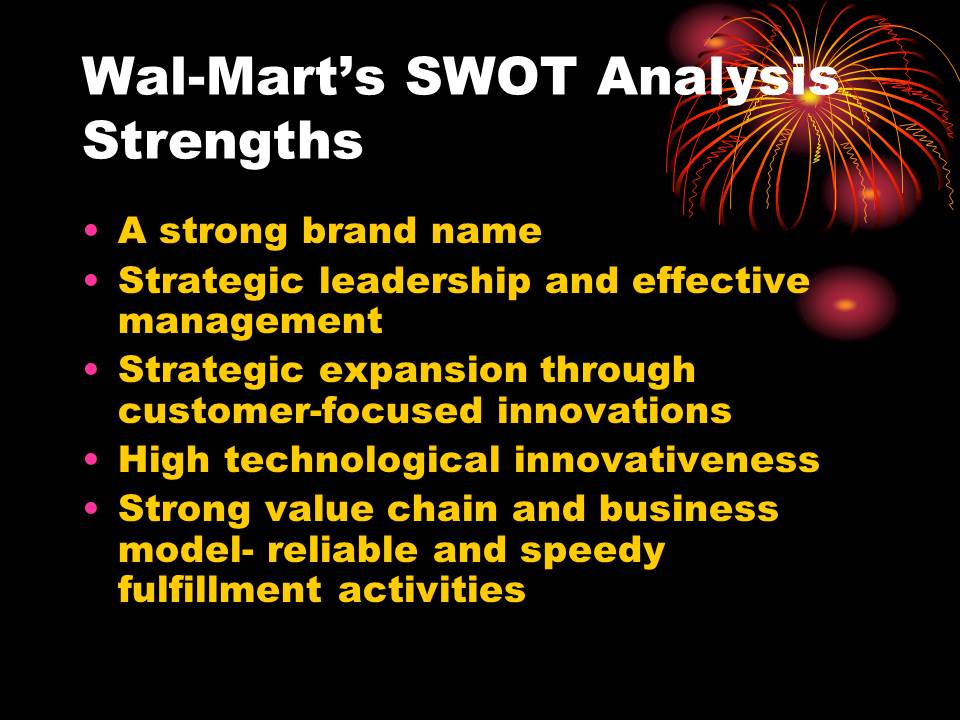
Strengths
- Wide range of products;
- Global expansion;
- Strong market position;
- High turnover growth;
- Use of efficient information technology.
The company deals with a wide range of products and thus the customers can make choices. The company also operates in different countries like china, Canada, Brazil, Japan and United Kingdom which has resulted to high market share. The company’s strong position in the market, high turnover growth and use of efficient information technology is a strength which helps the company to be a market leader.

Weakness
- Prioritizing customer over strategic relationships;
- Inflexibility;
- Has managed to venture in very few countries;
- Low profit margins;
- High Indebtedness;
- Disloyalty in partnerships.
Wal-Mart’s company has some weaknesses which it should try to avoid in order to have a competitive edge in the market. The customers are prioritized over strategic relationship which results to the company’s failure to build long lasting relationships with the customers. The management of the company is very rigid which makes it hard to introduce new changes. The other weakness that the company is experiencing is low profit margins accompanied by high indebtness. The company is also not loyal to its business partners like the suppliers and distributors.
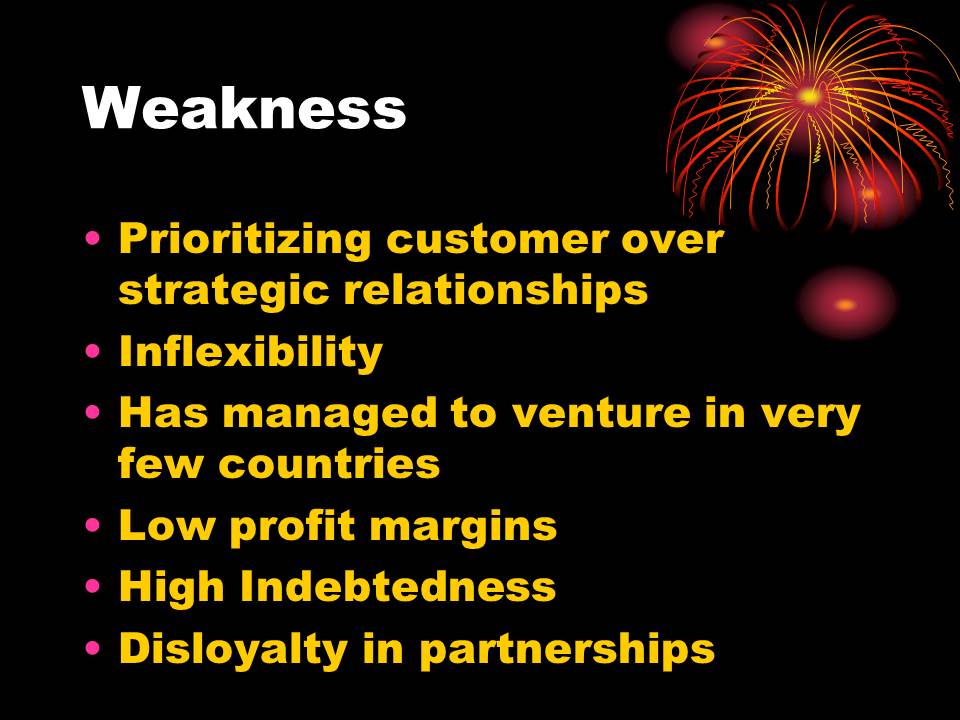
Opportunities
- Merging with global retailers;
- International business expansion;
- Market development;
- Increasing technological advancements;
- Emerging markets.
There is opportunity for Wal-Mart to form merger or alliances with other retailers in their international retail expansion strategies. For example, emerging markets particularly in Asia and Africa have presented many companies with opportunities to expand their business initiatives in the global markets. The company can also venture in more countries to increase its market share while at the same time adopting the latest technology in order to achieve an edge in the market.
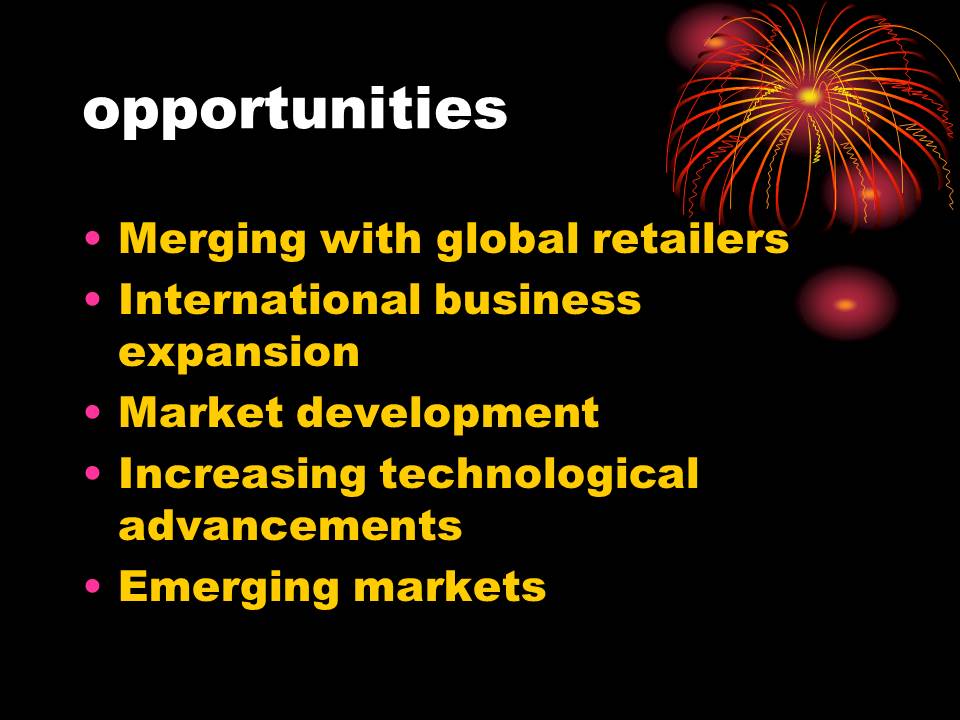
Threats
- Global competition;
- Intense rivalry;
- Political problems;
- Price competition;
- Counterfeit products;
- Government regulations;
- Seasonality of business;
- Intellectual property infringement.

PESTEL Analysis
Political
- Repatriation of funds and foreign currency exchange restrictions;
- Government regulation;
- Taxation Policies;
- Tariff barriers;
- Restrictions on foreign ownership.
Economical
- Seasonality issues;
- Interest rates, exchange rates against U.S Dollar;
- New economic powerhouses;
- Import/Export ratios Socio-cultural;
- Lifestyle trends and consumer preferences;
- Demographic changes;
- Major events and influences.
Technological
- Innovation capacity;
- Replacement technology and rate of system redundancies;
- Timing, effectiveness, and costs of upgrades and Technological developments.
Environmental
- Natural disasters;
- Environmental awareness;
- Environmental lobby.
Legal
- Competition regulation;
- Intellectual property regimes- patenting;
- Technical standards;
- International pressure groups;
- Lower tariff barriers have improved international trade particularly with emerging markets like China (Verlag, 1998).
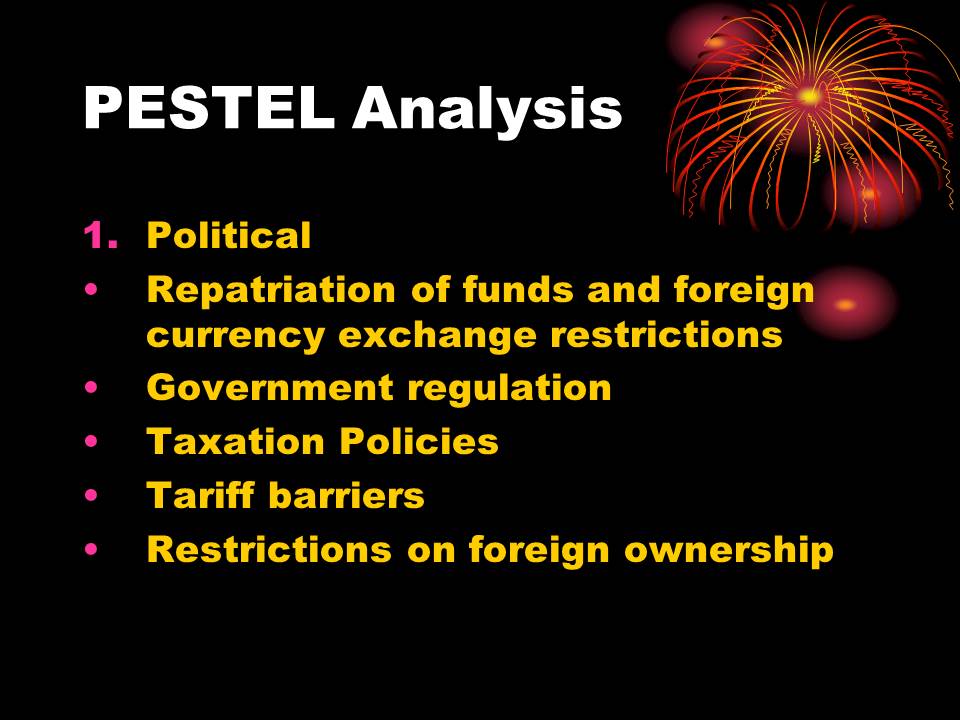

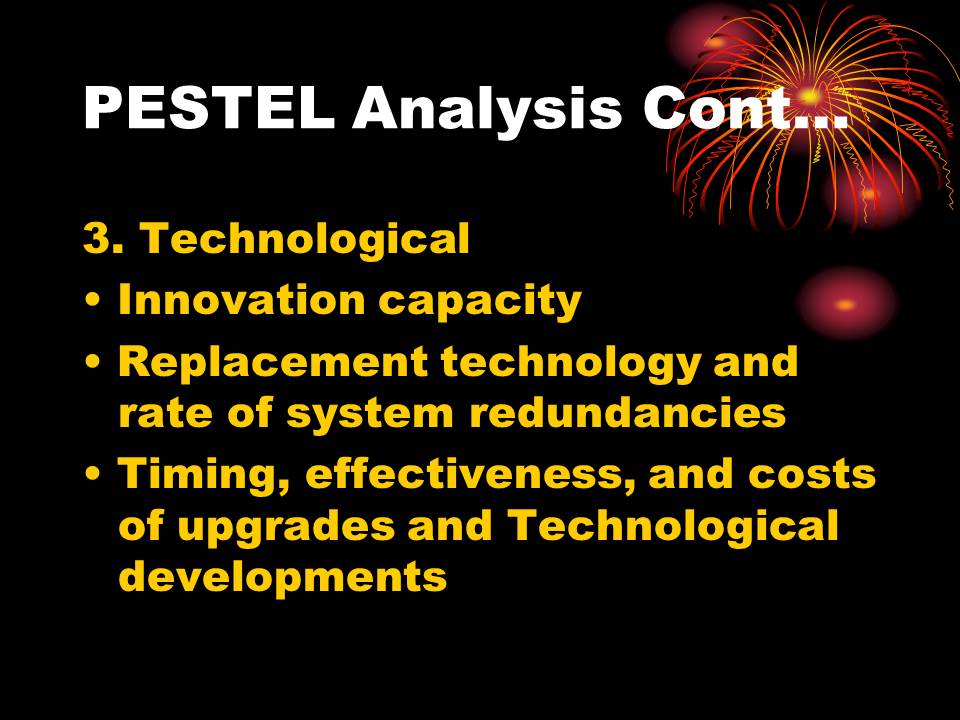
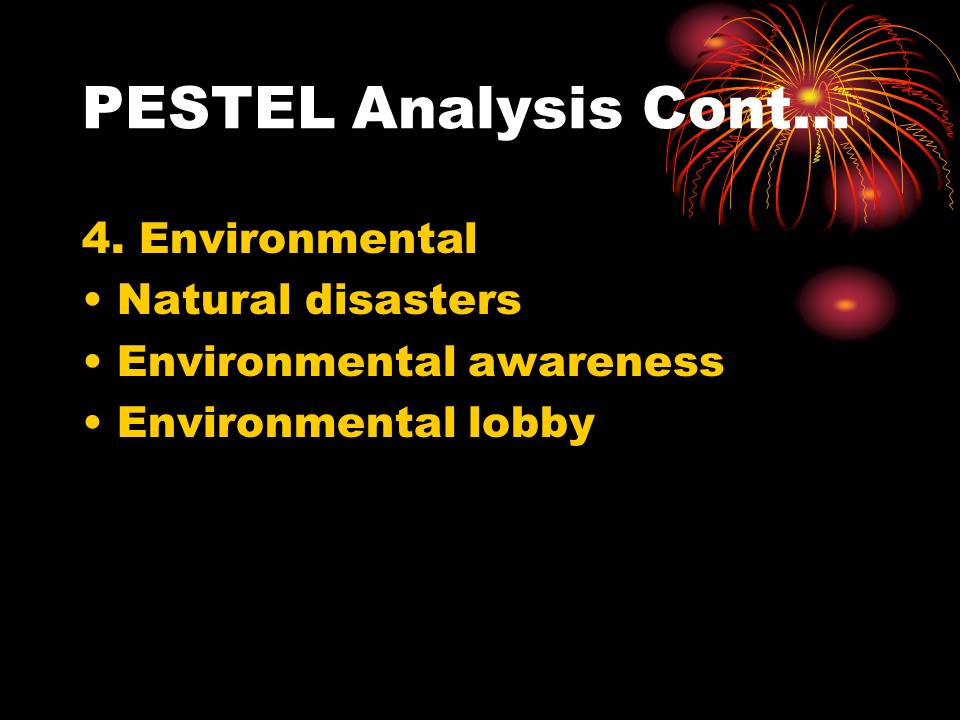
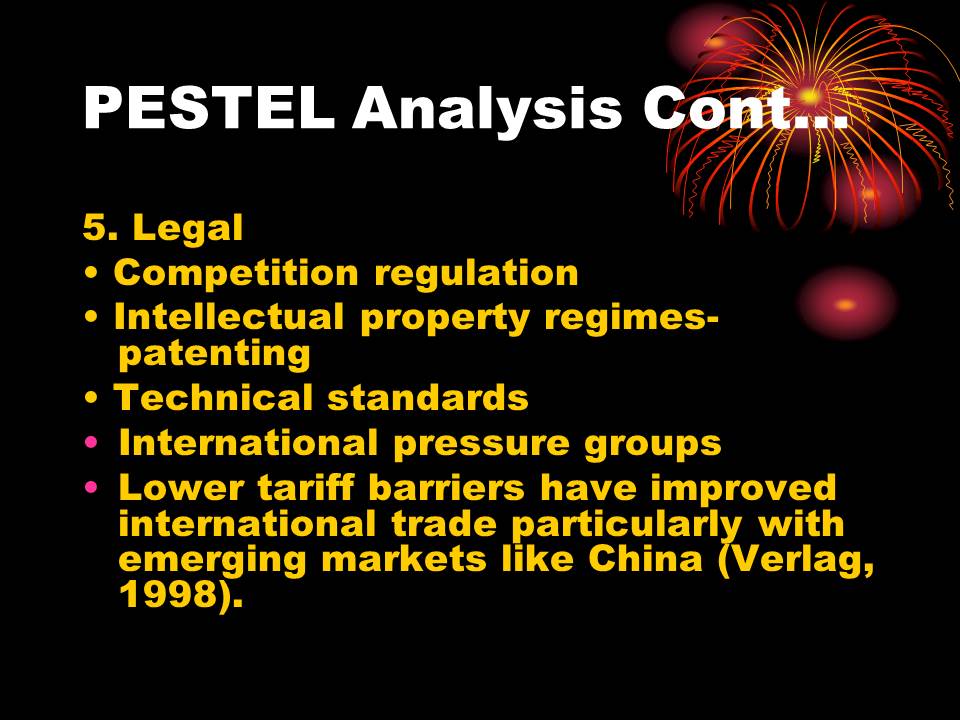
Marketing strategy
- Emphasis on the company’s reputable brand name to lure more customers;
- Large scale low cost production strategy to penetrate low-end market thus increase sales turnover;
- A well developed marketing synergy through joint venture co-branding. This has helped the company develop more differentiated products to increase their attractiveness.
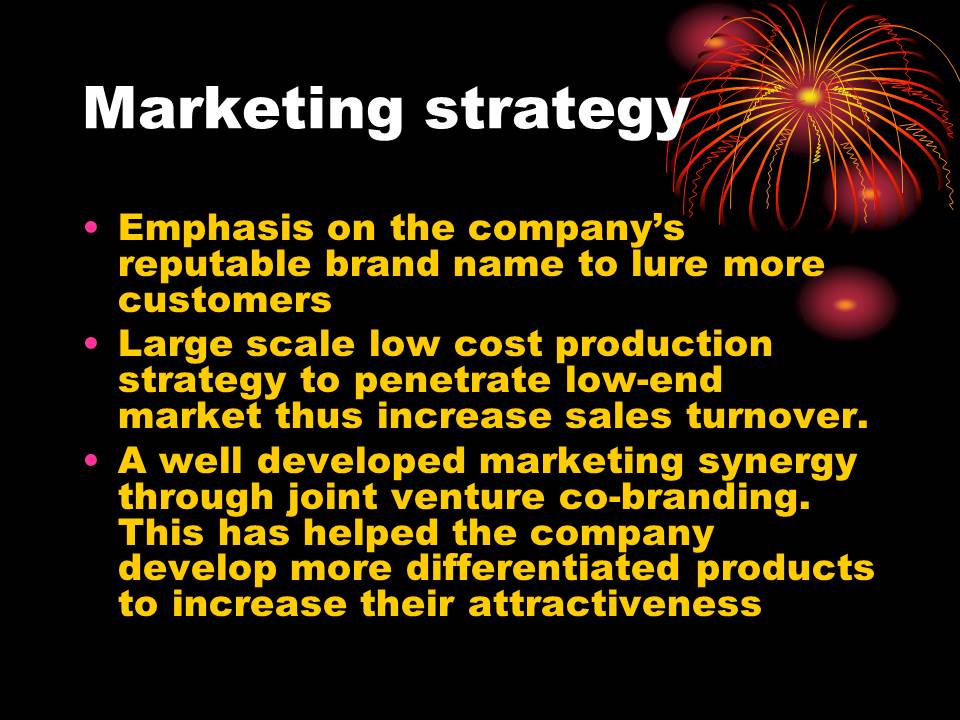
Strategic position
By efficiently controlling its cost drivers, Wal-Mart has developed a cost and differentiation advantage over its competitors through:
- A high degree of technological innovativeness;
- Economies of scale and scope in ability to reach customers;
- Maximization of resources and capacity;
- Linkages between value chain activities;
- Interrelated business units;
- Vertical integration;
- Geographical diversification;
- Introduction of cost discipline (Carolyn, 2010).
- Institutional factors such as frugality.
- Most of its products are advertised over the internet making it easy for all people to access the information (Pahl & Ritchter, 2009).
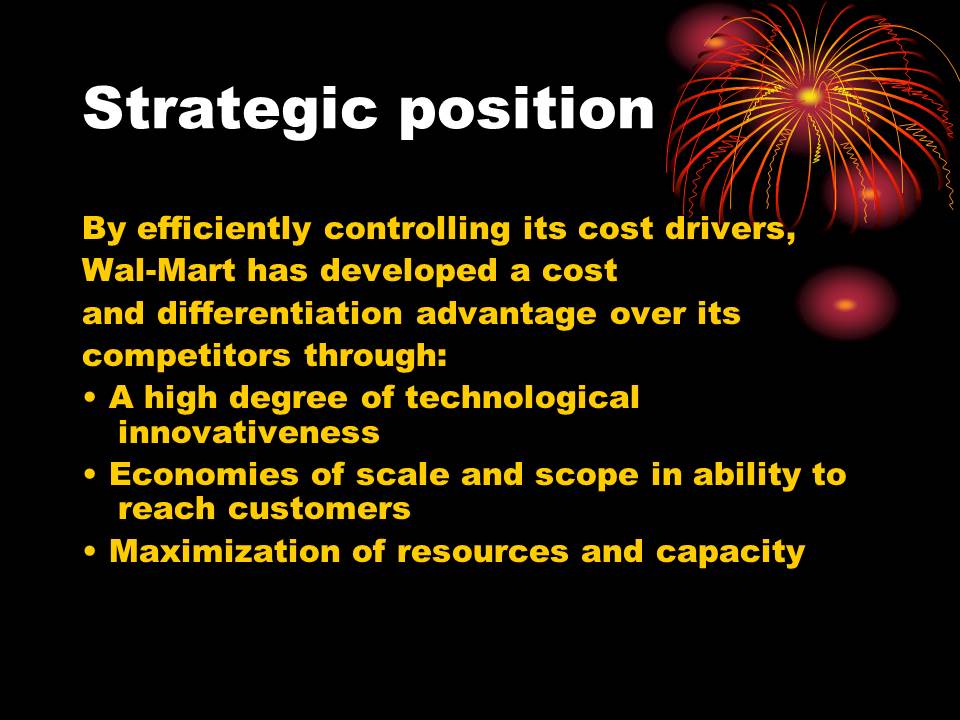

Human Resource Analysis
- Competent staffs to hire personnel through selection and recruitment processes.
- Talented personnel.
- Training of new employees after appointment.
- Workforce planning-organization of staff.
- Team empowerment nurtures a culture of innovation.
- Skills management fits in with frugality value.
- Motivation of employees to think and act like owners through savings plan.
- Utilizing independent contractors and temporary personnel tallies with seasonality of business.
- HR manager has power to hire and fire all HR resources.
- The HR runs the day to day activities and they are motivated through incentive schemes and trainings.
- Managers’ direct involvement in the day to day running of the company, particularly, the organization of teams fosters an informal top management style, which promotes upward feedback and effective deployment of human resources according to proficiency.
- The CEO’s tactical leadership and the ingeniousness of Wal-Mart’s HRM are reflected in the conglomerate’s strategic expansion through customer-focused (Harvard Business School Press, 2006).
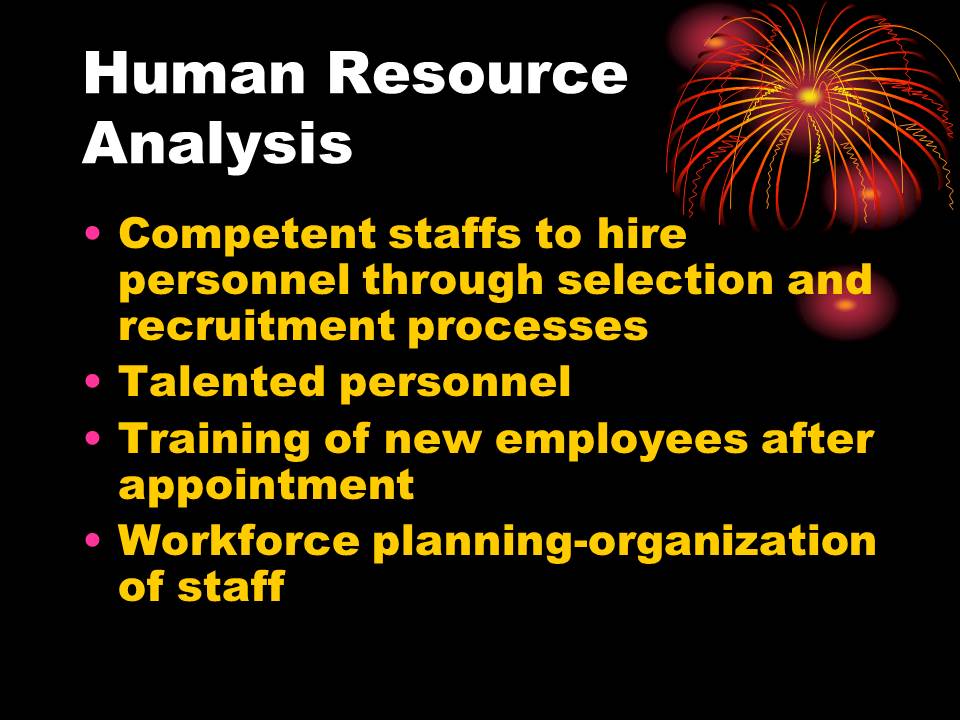
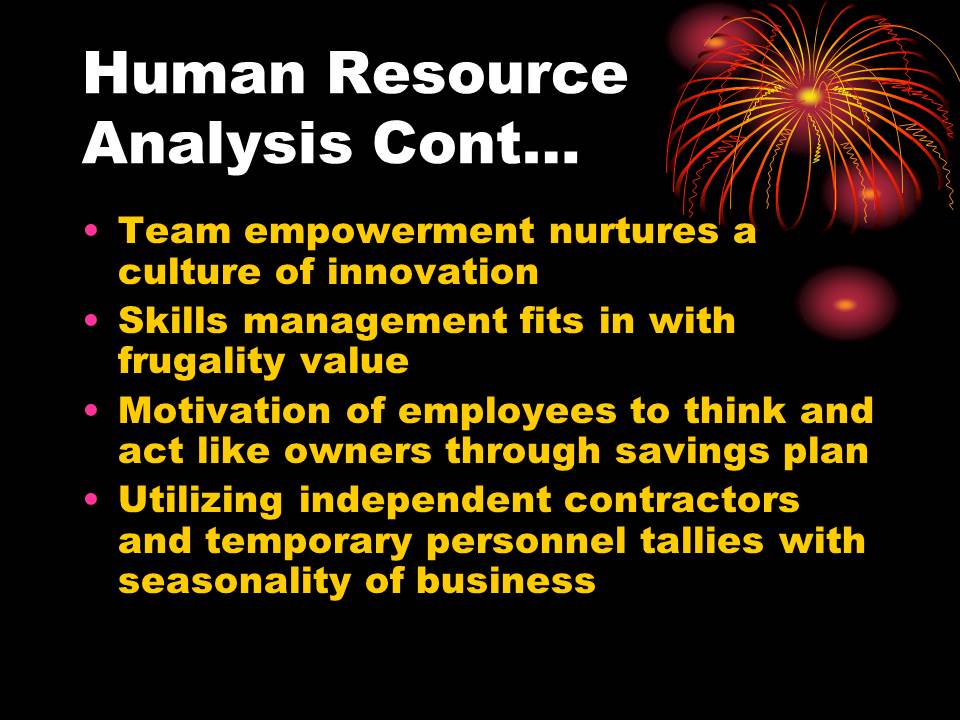
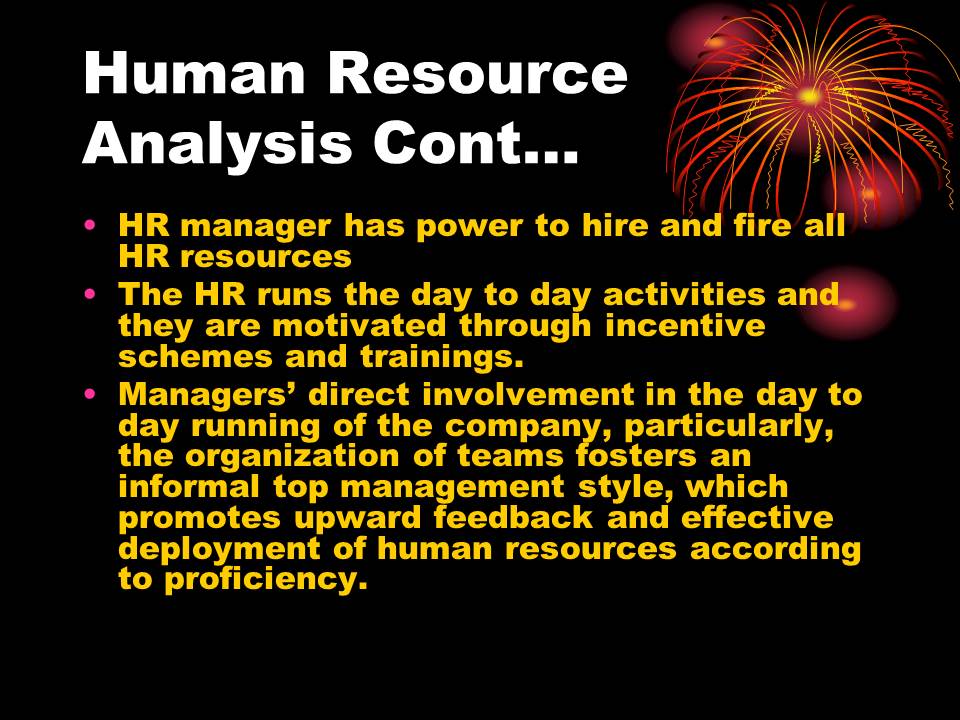
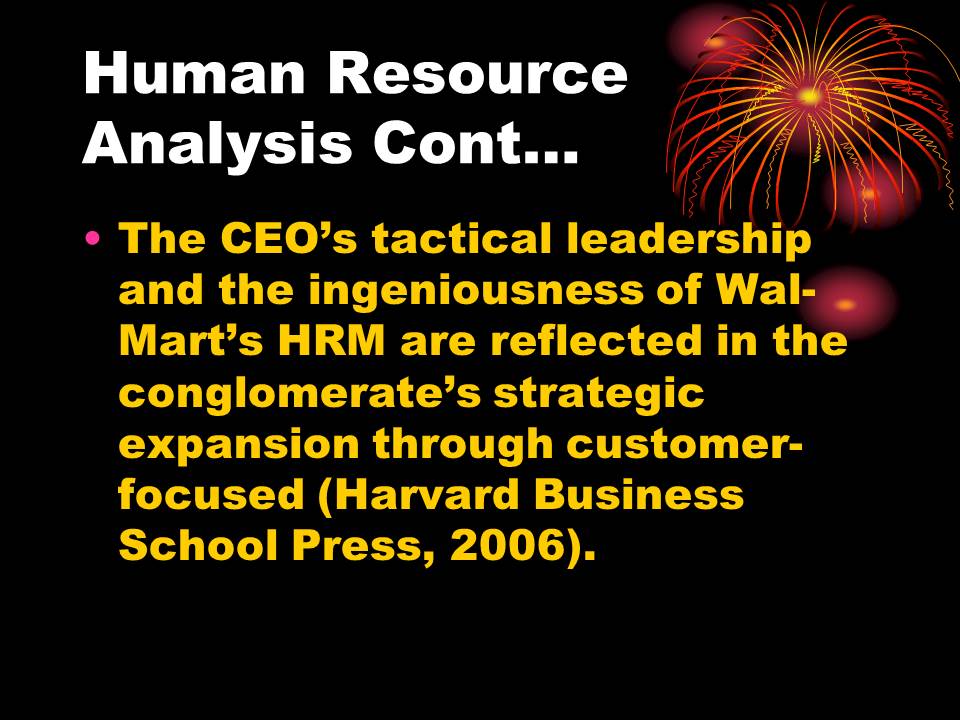
Porter’s Five Forces Analysis
- Buyer’s bargaining power: Buyers determine which products will move first and which will not. It is through buyers that a company realizes its competitive advantage in the market. Wal-Mart has the following buyers’ power.
- Low switching costs • Buyers are many and are not concentrated. This is a weak force since the buyers have limited bargaining power.
- Competitive Rivalry in the industry Within an industry, there are businesses which compete with each other for the available market share. These businesses either specialize in the production of similar products or differentiated products.
Wal-Marts rival firms compete with one another on the basis of:
- Low prices;
- Quality;
- Performance;
- High exits barriers;
- Little product differentiation;
- High investment intensity.
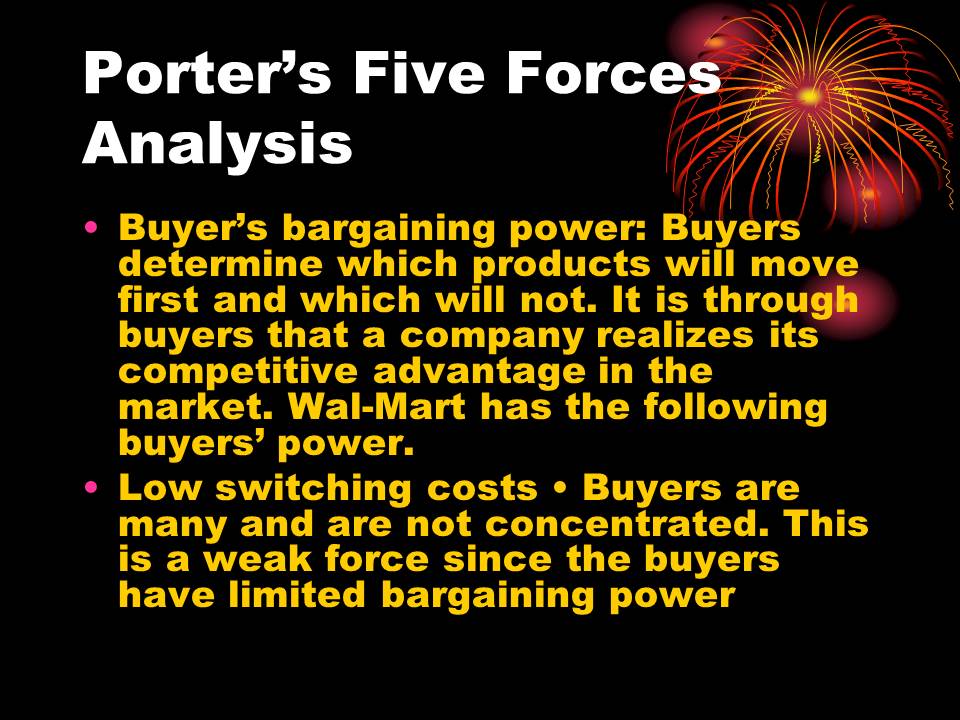
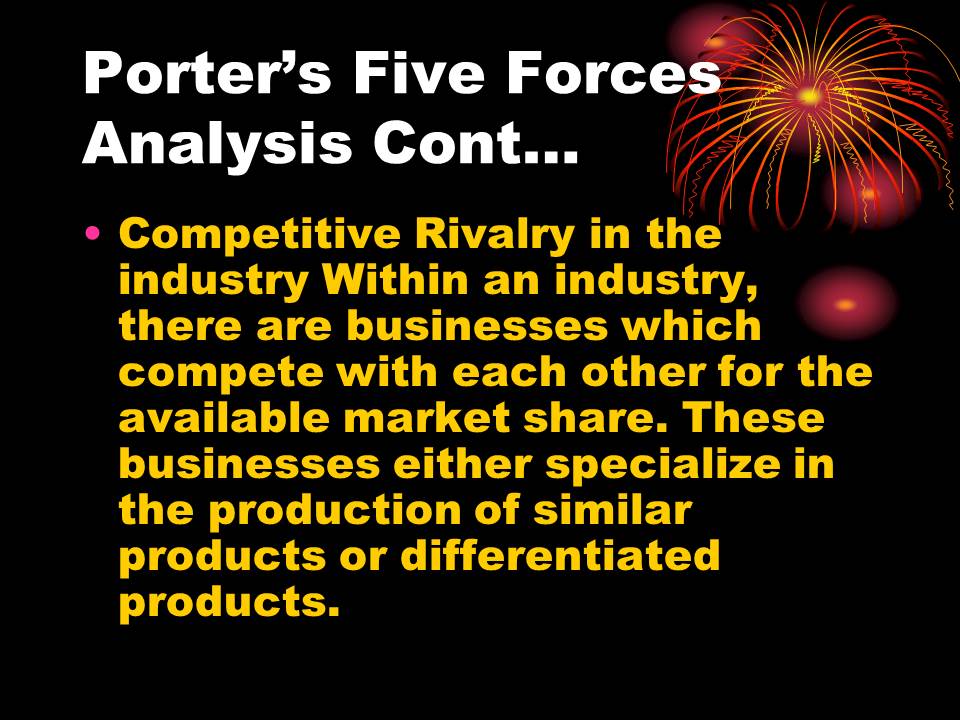
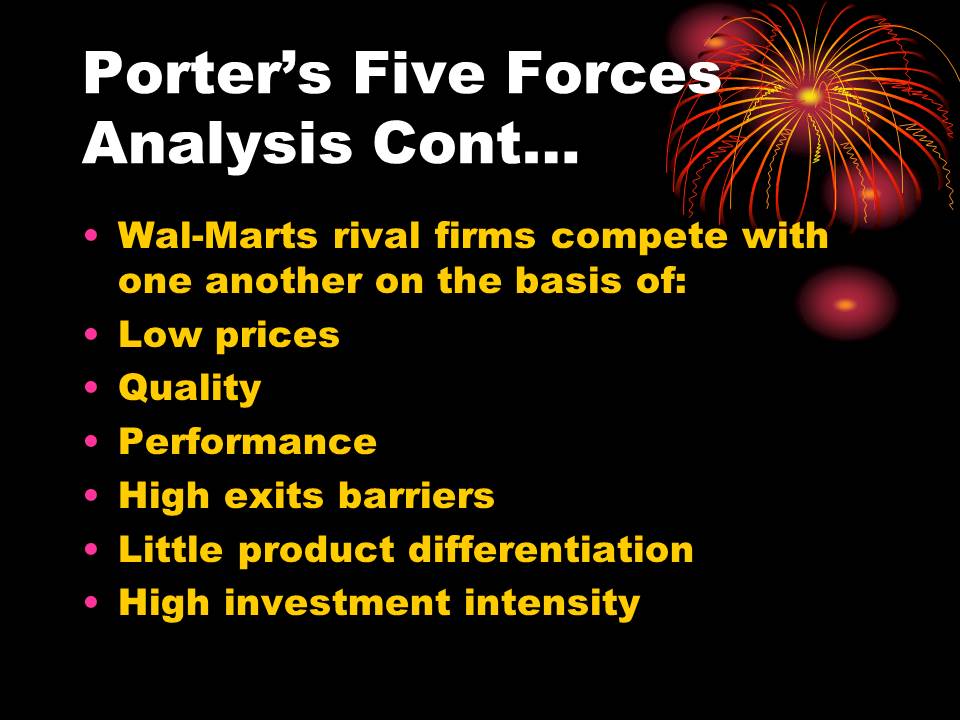
Future strategy
- Increase its global expansion into emerging markets of the world e.g. China;
- Develop more partnerships;
- Emphasize on strategic management in new markets.
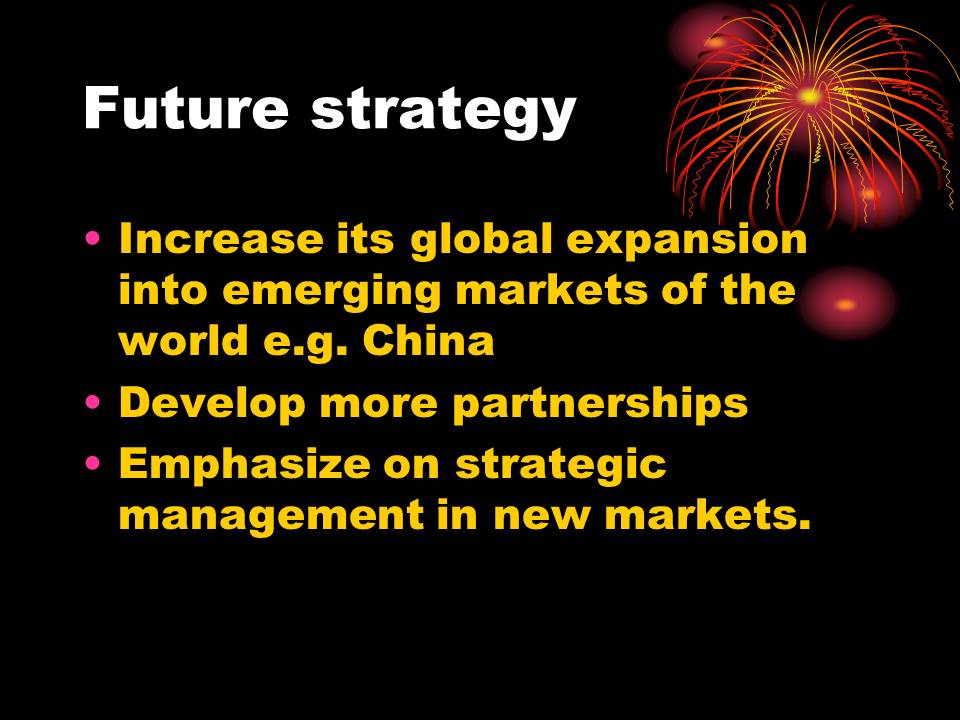
Conclusion
Assessment of Wal-Mart’s overall strategy shows that it has gained tremendously with low price. The company has done relatively well in its customer retention strategy through low cost and pricing, and human resource management. However, the retailer’s benefits from marketing synergy through its joint venture co-branding could be curtailed by poor reputation caused by possible partnership breakdown. The company has a cost-effective value chain that enhances the strength of its business model although technology breakdowns could result in loss of sales (Daft, 2009).
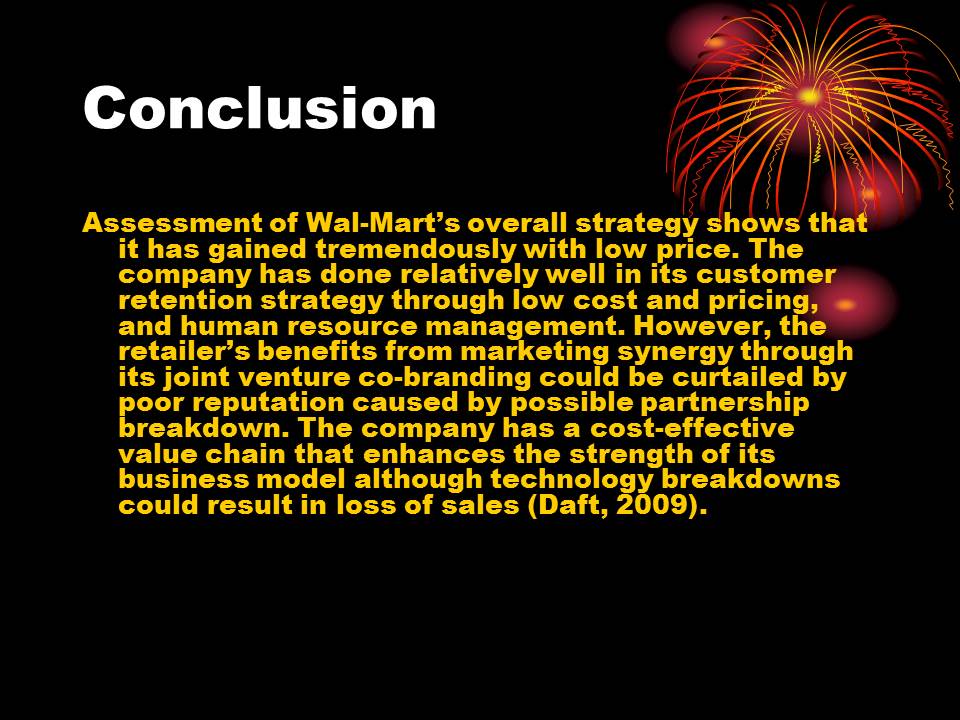
References List
Carolyn B. (2010). Organizational Theory. Web.
Daft, R.L. (2009). Organization Theory and Design. New York: Wiley and Sons.
Harvard Business School Press, (2006).
Essentials of strategy Harvard business literacy for HR professionals’ series. New York: Harvard Business Press.
Pahl, N., & Ritchter, A. (2009). SWOT Analysis – Idea, Methodology and a Practical Approach Akademische Schriftenreih. New York: GRIN.
Verlag, P. (1998). Strategic positioning in the oil industry: trends and options. Emirates Center for Strategic Studies and Research: I.B.Tauris.